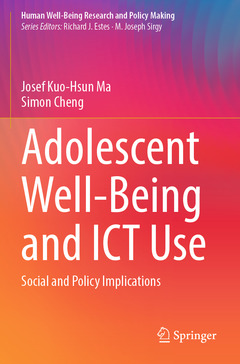Adolescent Well-Being and ICT Use, 1st ed. 2022 Social and Policy Implications Human Well-Being Research and Policy Making Series

In this book, the authors expertly examine the issue of adolescent well-being in the light of their exposure to and use of information and communication technologies (ICTs) at school and home. The authors discuss a new form of inequality especially noticeable among youth, which is, digital inequality/divide, created through rapid developments in ICT. They analyze the relation between digital divide and educational inequality among youth, describe patterns of social exclusion from technology and education, and discuss related policies in industrialized nations to see how well-being issues can be addressed in this context. Comparing results based on nationally representative and internationally comparative datasets across 28 countries, the authors ask how and why the benefits accruing from ICT are substantially greater for some adolescents, but apparently smaller for others and how such differences may be reduced. They provide policy suggestions that are broadly based in the fields ofwell-being, secondary education, and technology use. This book is of interest to researchers and students of quality of life and well-being studies and a wide range of social science and education disciplines, including the sociology of education, media sociology, sociology of childhood and adolescence, communication studies, and science and technology education.
Date de parution : 05-2023
Ouvrage de 229 p.
15.5x23.5 cm
Date de parution : 05-2022
Ouvrage de 229 p.
15.5x23.5 cm



